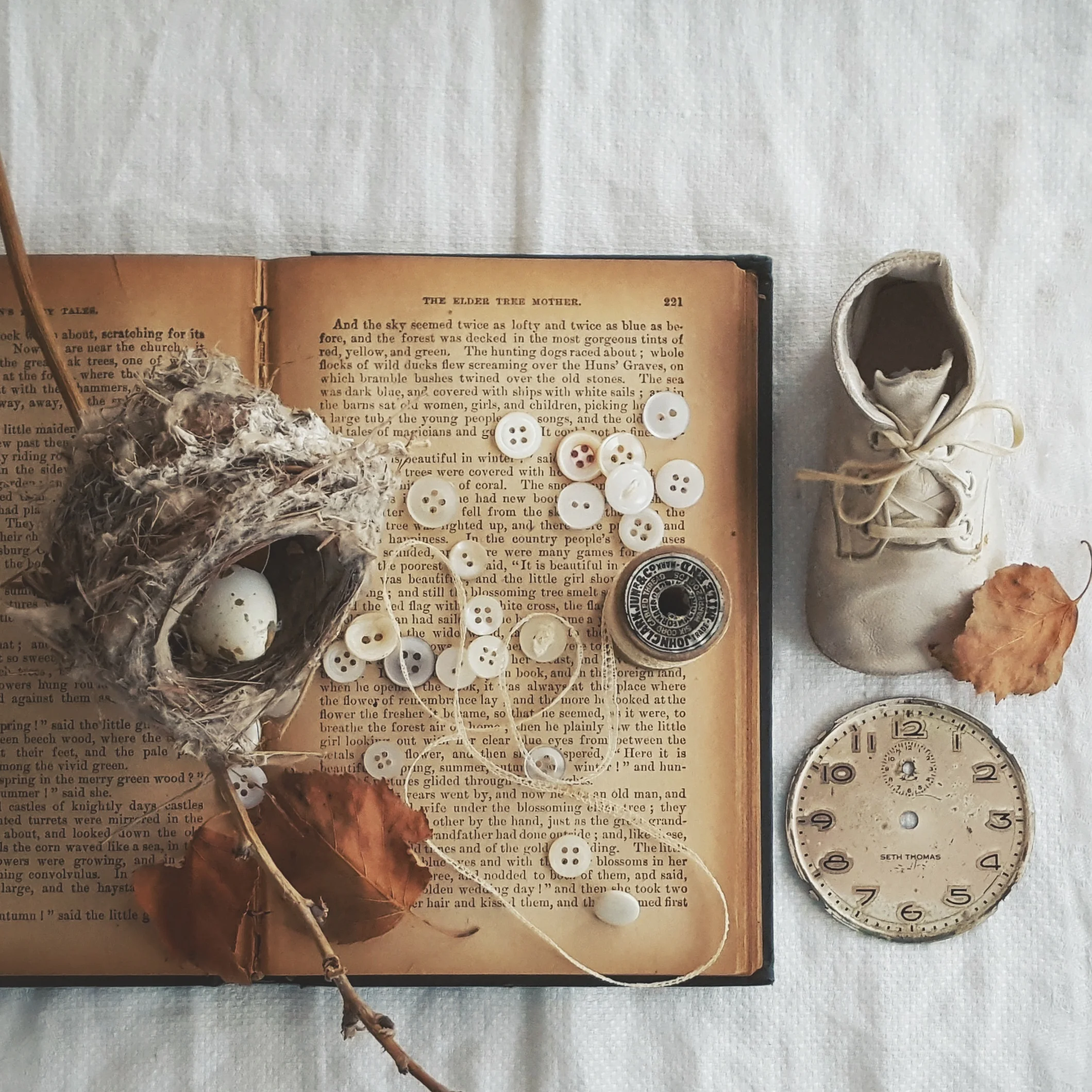Recently we’ve had a spat of appliances break at our house…and what was most exasperating about it was the fact that the appliances weren’t that old and it didn’t make financial sense to fix them - the charger for the cordless lawnmower was no longer manufactured and the port on the TV console was prohibitively expensive to fix. The microwave could at least be dropped at a recycling center…but the lawnmower had no option other than being tossed in the landfill…we have yet to determine what can be done with the broken flat screen TV. Such is the nature of our society…better to throw it out and buy new. Certainly the recycling/upcycling movement has caught hold in some segments but we still have a ways to go in living more gently with the earth.
It is exactly for this reason that I use well-loved, previously owned items in the creation of my art…those items that are deemed useless…and not worthy of time nor attention…I find that these items hold the most promise of a story waiting to be told.
The practice of wabi-sabi, the Japanese aesthetic of appreciating transience and imperfection, is the essence of finding beauty in the broken. The textures and tones of scratched and chipped bottles…the peeling paint on an old house…water and age spots on a weathered clock…I find a wealth of interest and intrigue…what happened previously…who owned these items…were they once cherished and now forgotten…why…
With the rush of summer garage/yard/estate sales about to commence, I find it easy to pick up fodder for my collages. I often bypass the dining room display of fine china and silver and head straight to the basement or garage…and if I’m really lucky, there’s a free box or trash bin to rummage. I am salvaging for those items that no one else wants…the lone baby shoe, the dogeared book, stained linens, loose buttons and random spools of thread…
My most recent collage is the epitome of using what others have thrown away in a creative composition…the foundation is a piece of cardboard ripped off of the back of an oil painting and discarded in a heap of old wooden picture frames. I immediately fell in love with the crackled patina of the surface and kept it on my work table for the last three years, waiting for the right moment. A torn page from a glee club songbook, “The Painter and The Rustic” was too good to pass up…a dried up paint tube and a pair of stiff brushes was added to the story…the paint by number forest scene, picked up for 25 cents, completes the scenario.
Proof, once again, that the most ordinary objects can tell a story…you just have to listen…
“The Painter” will be featured at my booth at the Wedgwood Art Festival, July 13-14 in Seattle…I hope you’ll stop by…



